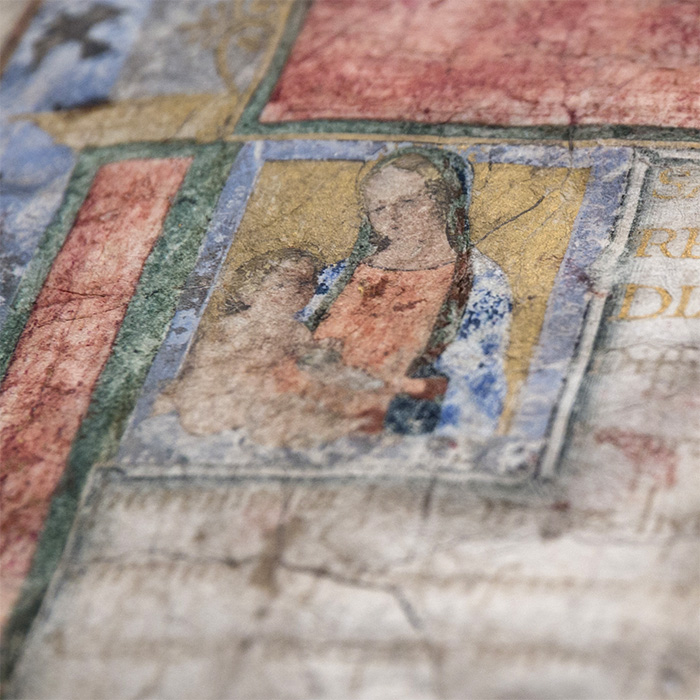Baptista Mantuanus
The work of the Carmelite friar Battista Mantovano was written almost a decade before the production of the codex. In 1488, it was published also in print, but without the dedication to King Matthias. The author in 1486-9 was living in Rome where he made friends with Alessandro Cortesi who had recently completed and sent to King Matthias a work praising the monarch’s military deeds. That probably inspired Battista Mantovano to add such dedication to his own work and send it to the king in an elegant copy with a beautifully illuminated title-page. The title-page that represents the elements of the newest Roman style illumination is the work of Giovan Pietro Birago.
The recently unveiled mysterious afterlife of the manuscript is an amazing case of modern-time art collection. Private collector Lajos Ernst purchased the manuscript in 1912 in Paris from the treasures of Sultan Abdul Hamid II as reported by the contemporaneous press. However, the already dethroned sultan had nothing to do with the deal. The real vendor was Tammaro De Marinis, famous Florentine book trader and excellent codicologist, who very well knew that the volume had been removed from its original place in an illegal manner. Therefore, he forged a misguiding story of the sultan which was credible because at that time there were indeed treasures of Abdul Hamid II under the hammer. De Marinis purchased Oriental manuscripts on the auction, the sultan had indeed made a deal with Corvinas in 1877 when he donated codices to Hungary (Group F.) With the conditions of the collections in Istanbul at that time, the details offered by De Tamaris were impossible to verify. However, the truth is that he acquired the manuscript from Wilfrid Voynich who sometime before 1911 had purchased 30 items from the stock that the Jesuits híd from the sight of government officials in 1870 at the nationalization of their collections. The owner before the Jesuits was the Pignatelli family which is proved by their family coat of arms painted upon that of King Matthias. The volume was partially burnt and fallen apart in 1849 in Rome, when a fire occurred in the Jesuits’ library. The burn marks can be seen still today. The damaged title-page got even more deteriorated in 1949 upon an unprofessional restoration. The folios that contain the last 24 lines of the poem have recently been identified in a manuscript of the Vatican (BAV, Vat. Lat. 11477). (Ferenc Földesi. The entry written for the guide to the exhibition was made on the basis of Dániel Pócs’ description below: The CORVINA LIBRARY and the Buda Workshop. Exhibition Catalog. (Publication in progress.) Budapest: NSZL, 2019, Cat. E2)
DATA SHEET
Shelfmark: Cod. Lat. 445.Country: Hungary
City: Budapest
Keeper location: National Széchényi Library
Author: Baptista Mantuanus
Content: Parthenice prima, sive Mariana
Writing medium: parchment
Number of sheets: 68 fol.
Sheet size: 250 × 155 mm
Place of writing: Rome
Illuminator: Giovan Pietro Birago
Place of illumination: Rome
Crest: Coat-of-arms of Antonio Pignatelli (Pope Innocent XII 1691‒1700), under it: King Matthias' coat-of-arms
Possessor, provenience: King Matthias Hunyadi; Antonio Pignatelli (crest, f. 1r); Lajos Ernszt; National Széchényi Library purchased it from Lajos Ernszt in 1939.
Binding: modern leather binding, the pattern of which imitates that of the corvinas
Language of corvina: Latin
Condition: Due to improper conservation, illumination of the codex was badly damaged; the current order of sheets is inaccurate.
Comment: Two (onetime ff. 73, 74) of the five missing sheets of the codex can be found at BAV, 11477, ff. 71, 72, comp. Pócs 2017.
Hungarian translation(s) of work(s) included in the corvina: None
